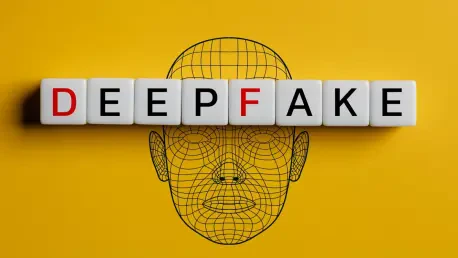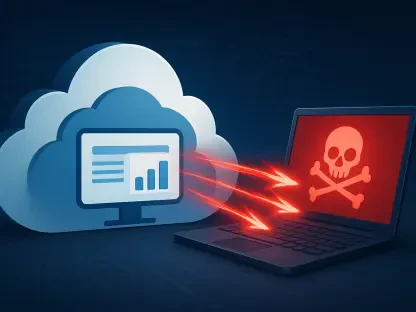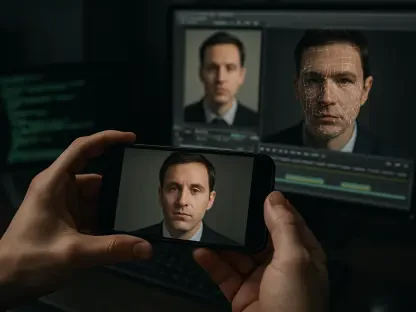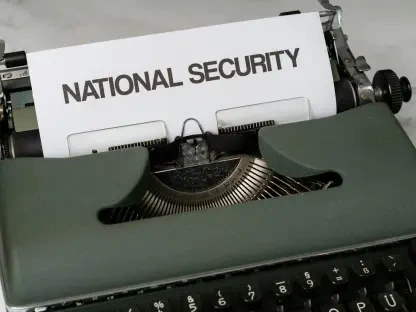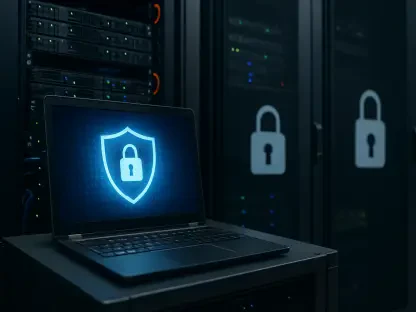Imagine an intricate digital recreation so compelling that it disrupts corporate dialogues and shreds the trust once inherent in business communications. Deepfake technology, a creation of sophisticated machine learning algorithms, is reshaping the corporate security landscape, making real-time visual and auditory authenticity dubious.
Navigating the Deepfake Maze: Corporate Security’s New Challenge
The surge of deepfake technology poses a fundamental challenge to businesses, transforming how security threats are perceived and managed. With its capacity to produce convincingly altered images and sounds, the technology interrogates the bedrock of authenticity that underpins corporate interactions. This crisis of credibility calls for a reevaluation of security systems, underscoring the urgent need to address an emerging threat that blurs distinctions between real and fabricated within essential business settings.
Deepfakes, the Digital Predator: Tracing Their Emergence
The rapid evolution of deepfake technology is akin to a stealth predator in the digital security domain. Since becoming widely recognized as a cyber threat, its implications have grown alarmingly. Businesses now find themselves navigating a landscape riddled with uncertainty and potential deception. The swift rise of deepfakes is a call to action for organizations to reassess their security strategies, acknowledging their dangerous potential to undermine corporate integrity and operational transparency.
Deceptive Realities: Fraudulent Schemes and Vulnerabilities
Deepfakes have penetrated business environments with an unsettling ease, executing intricate fraudulent schemes that exploit corporate vulnerabilities. One notable case involved Arup, a global engineering firm that suffered a staggering $25 million loss due to a meticulously orchestrated deepfake deception. Such incidents spotlight a widespread skepticism about the threat level deepfakes embody, often leading corporations to overlook or underestimate their reality. Statistical insights reveal an alarming disconnect, with many organizations failing to grasp the full extent of the risks posed by these digital tomfooleries.
Expert Opinions: Understanding the Global Impact of Deepfakes
Cybersecurity experts portray a multifaceted narrative of deepfake technology’s impact, emphasizing its pervasive threat. Global organizations, armed with vital statistics, underscore the troubling realities they’ve encountered due to deepfakes. The KnowBe4 incident, where a deepfake facilitated a North Korean hacker’s infiltration, adds tangible weight to the discourse. This narrative extends beyond fraudulent activities, painting a picture of vast vulnerabilities, including threats of espionage and reputational damage.
Strategic Defense: Mitigation Approaches Against Deepfake Risks
Confronting the deepfake menace involves implementing strategic defensive measures that go beyond standard security protocols. Embracing biometric systems equipped with liveness detection emerges as a pivotal line of defense. Organizations are adopting multi-layered strategies such as facial biometric enhancements, AI-driven detection systems, and continuous security monitoring. Practical advice calls for elevating leadership priorities, advocating for increased investment in cybersecurity, and fostering a culture of digital security awareness to effectively counteract deepfake threats.
The encounter with deepfake technology has ceased to be speculative—the realists have taken center stage, urging strategic responses from corporate entities. As organizations reflect on the vulnerabilities exposed by deepfakes, it becomes clear that investing in robust security measures and fostering an agile response framework are paramount in safeguarding their future. Drawing conclusions from the confronting realities of these digital impostors, businesses are prompted to envision a security landscape where vigilance and proactive measures against deepfakes are not just recommended but essential.
